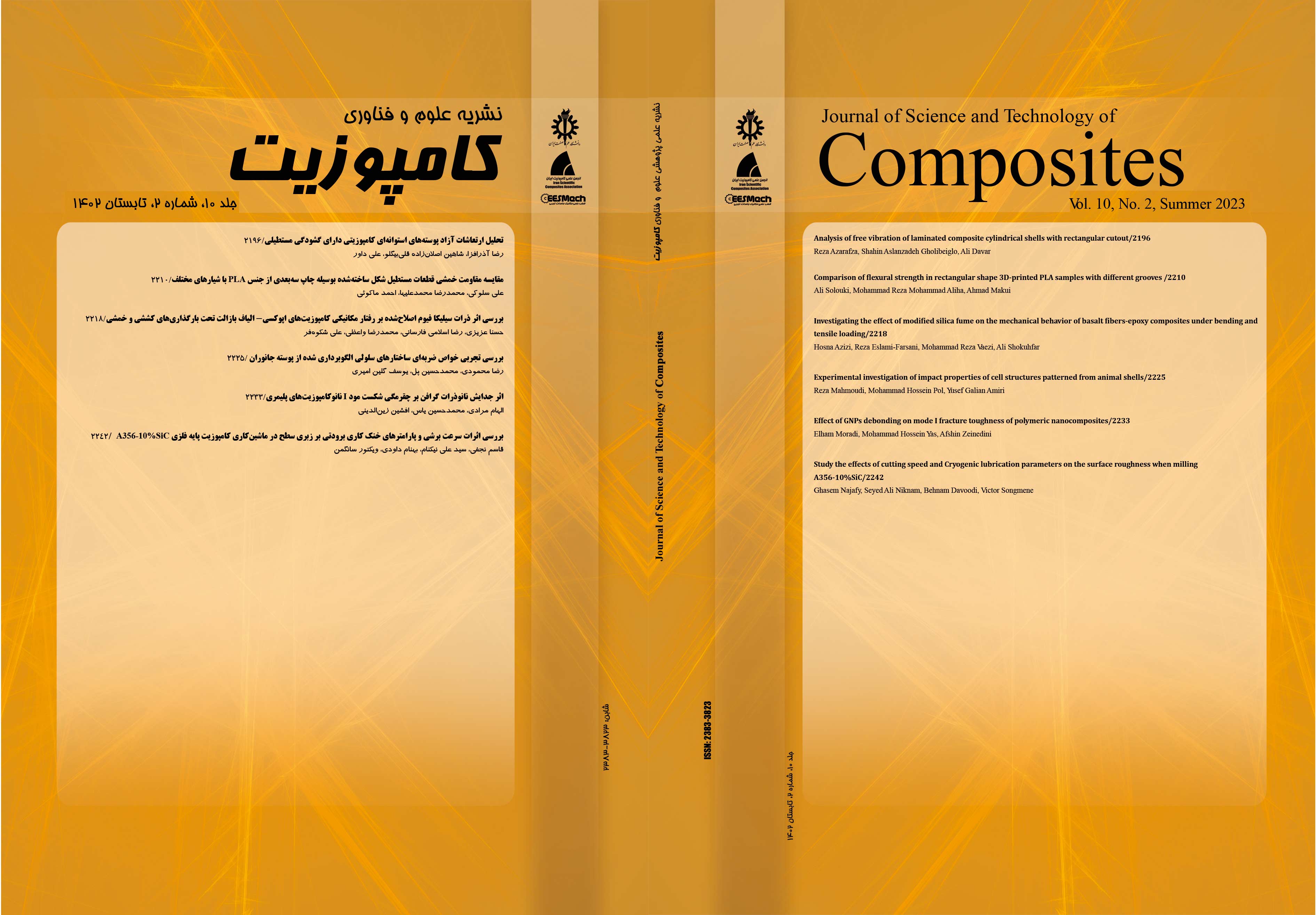Document Type : Research Paper
Authors
1 School of Mechanical Engineering, Iran University of Science and Technology, Tehran, Iran.
2 Department of Mechanical Engineering, Ecole de Technologie Superierue, Montreal, Canada.
Abstract
Nowadays, much attention has been paid to metal matrix composites due to their unique features and extensive applications in numerous manufacturing sectors such as automotive, aerospace and energy. Aluminium metal matrix composites (Al-MMCs) are among the most highly used MMCs. The unique features of Al-MMCs are high hardness and high resistance-to-weight ratio. Moreover, the main drawbacks are the low machinability, high and rapid tool wear, and complications in the surface quality in machining operations. Limited studies reported using cooling methods, such as cryogenic strategies, on the surface quality when machining Al-MMCs. Therefore, the effects of cutting parameters and cryogenic cooling method on the surface quality of A356-10%SiC have been studied in this study. According to the performed analysis, it was observed that cryogenic cooling parameters and cutting speed had negligible statistical effects on the average surface roughness (Ra) of the tested material with R2 of 65%, which resembles a weak relationship between studied parameters and Ra. Nevertheless, the cryogenic pressure had the most significant effects on the variation of Ra amongst cutting and lubrication parameters.
Keywords
Main Subjects
